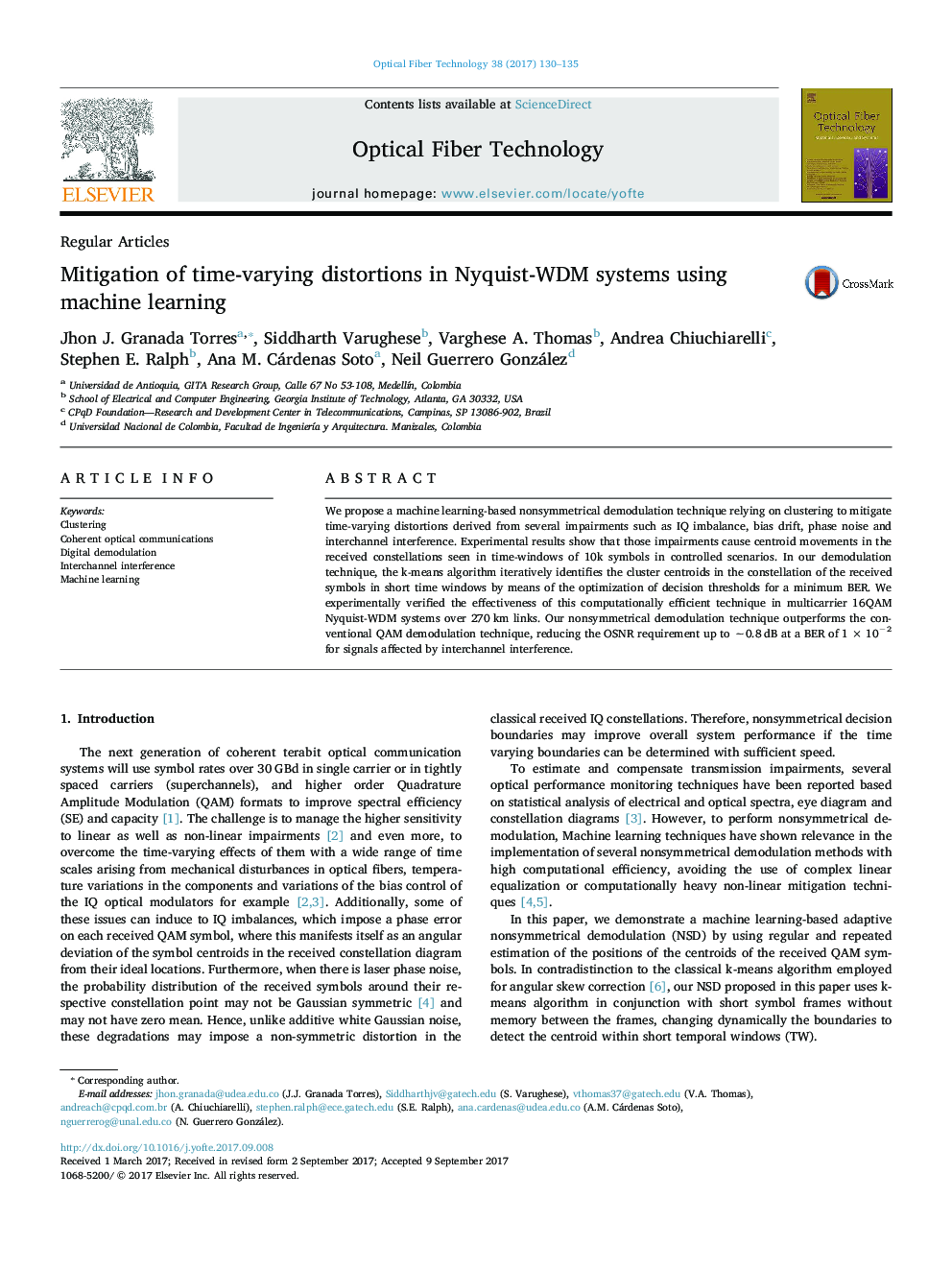| Article ID | Journal | Published Year | Pages | File Type |
|---|---|---|---|---|
| 4956990 | Optical Fiber Technology | 2017 | 6 Pages |
Abstract
We propose a machine learning-based nonsymmetrical demodulation technique relying on clustering to mitigate time-varying distortions derived from several impairments such as IQ imbalance, bias drift, phase noise and interchannel interference. Experimental results show that those impairments cause centroid movements in the received constellations seen in time-windows of 10k symbols in controlled scenarios. In our demodulation technique, the k-means algorithm iteratively identifies the cluster centroids in the constellation of the received symbols in short time windows by means of the optimization of decision thresholds for a minimum BER. We experimentally verified the effectiveness of this computationally efficient technique in multicarrier 16QAM Nyquist-WDM systems over 270Â km links. Our nonsymmetrical demodulation technique outperforms the conventional QAM demodulation technique, reducing the OSNR requirement up to â¼0.8Â dB at a BER of 1Â ÃÂ 10â2 for signals affected by interchannel interference.
Related Topics
Physical Sciences and Engineering
Computer Science
Computer Networks and Communications
Authors
Jhon J. Granada Torres, Siddharth Varughese, Varghese A. Thomas, Andrea Chiuchiarelli, Stephen E. Ralph, Ana M. Cárdenas Soto, Neil Guerrero González,
